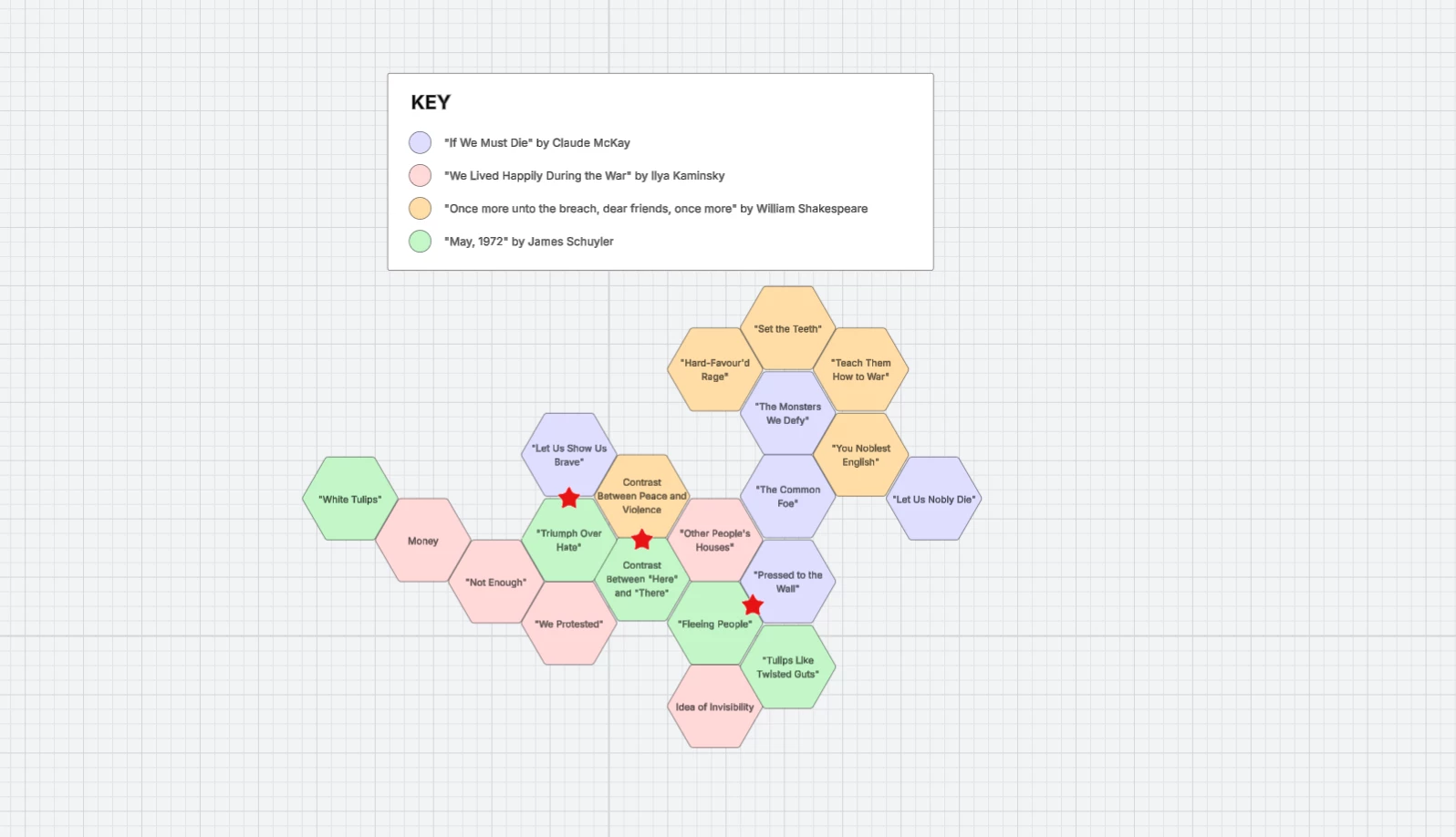Instructor Highlight | Braxton Thornley
Sr. Trainer | Instructional Technology | Utah Education Network
Template: Sample Hexagonal Thinking Activity (War Poetry)
Video: Connecting Ideas with Hexagonal Thinking and Lucid

Detailed Walkthrough
Classroom discussion is a powerful tool for deepening students’ learning (Hattie places its effect size at 0.82) but can be difficult to facilitate. How can we get more students to talk—and talk more deeply—about what they’re learning? One of my favorite approaches is hexagonal thinking.
Originally developed by Betsy Potash, hexagonal thinking is a discussion-based activity requiring students to connect ideas. It works like this: students are divided into groups and given a number of hexagons (either physical or digital). Each hexagon is labeled with an idea or concept. Students then illustrate connections between ideas by lining up the side of one hexagon with the side of another.
Because hexagons have six sides, any one idea could potentially connect with six others, providing ample opportunity for students to find interesting connections they may have missed otherwise. Most importantly, though, the task itself demands enough creativity and collaboration to spark meaningful conversation.
Here’s how I set it up:
- Sign into Lucidchart.
- Create as many hexagons as you’d like your students to tangle with, and add any other elements you think could deepen students’ conversations. (I like to ask students to designate interesting connections with stars, and when comparing concepts from different units or texts, I tend to color code the hexagons.)
- Convert your document into a template.
- Share the template link with students.
